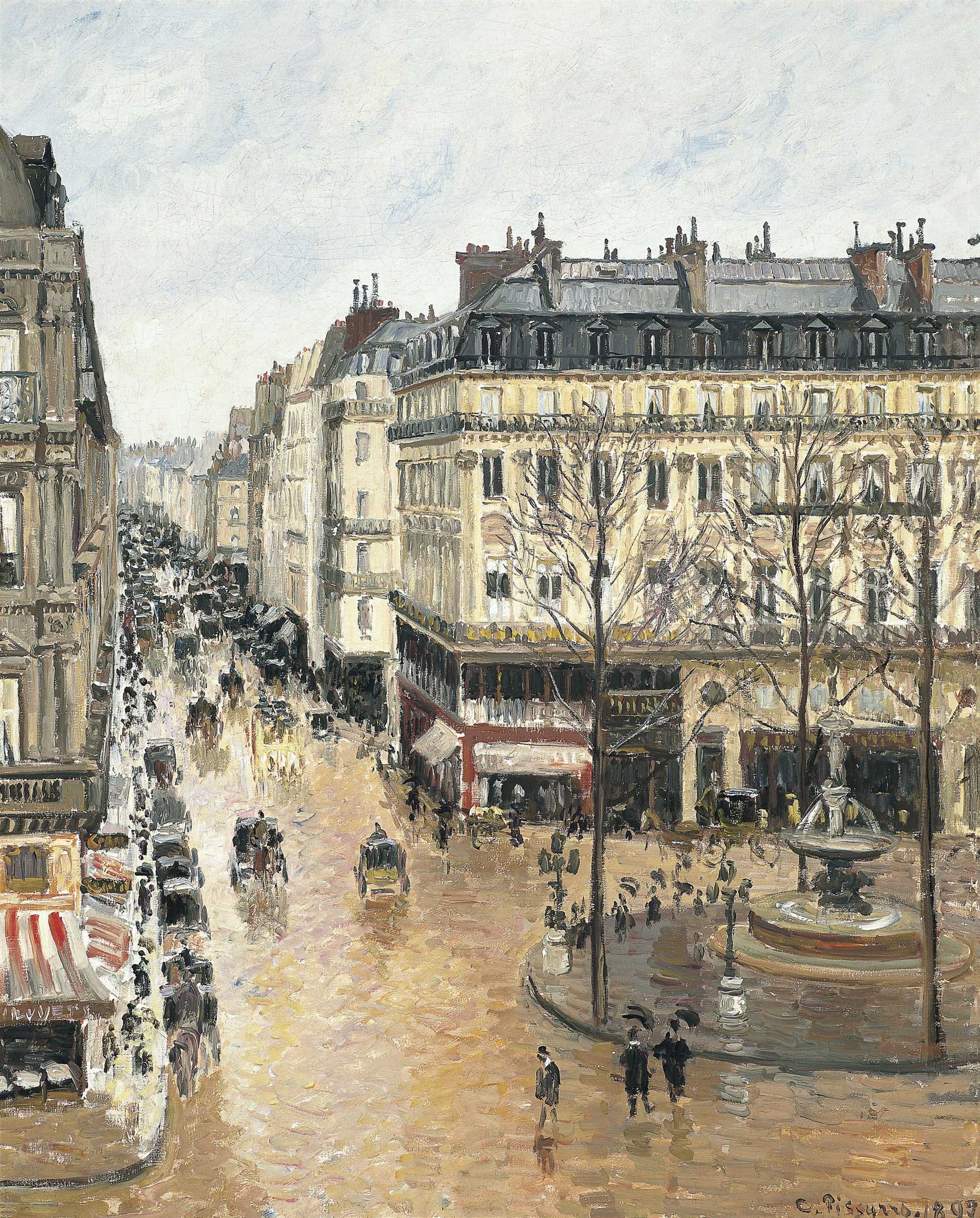The Supreme Court may have granted a significant win to a family attempting to reclaim a $40 million artwork seized by the Nazis.
Why It Matters
The controversy surrounding the Impressionist piece by Camille Pissarro highlights the challenges involved in determining ownership of artworks seized by the Nazis. The most recent ruling may assist the family in reclaiming the painting following an extended and arduous legal struggle.
What To Know
During the 1930s, an artwork titled "Rue Saint-Honoré in the Afternoon. Effect of Rain" by the renowned French Impressionist artist Camille Pissarro, adorned the walls of a residence in Berlin belonging to a Jewish woman named Lilly Cassirer.
In 1939, the Nazis compelled her to hand over the painting to the government for roughly $360 in today’s currency. As compensation, she received an exit visa allowing her to flee Nazi oppression; subsequently, she made her home in the United States.
The artwork changed owners and ended up being bought by a gallery owner from California in 1951. Over the following 25 years, it passed through various hands multiple times until it was transferred from a New York gallery to German steel heiress Baroness Hans Heinrich von Thyssen-Bornemisza.
In 2017, the plaintiff’s original written filing to the Supreme Court claims that the acquisition took place “amidst questionable conditions.”
In 1993, the baron set up a foundation aimed at establishing the Thyssen-Bornemisza museum in Madrid. He subsequently sold the artwork to this institution. Earlier statements from the museum indicated that the baron had acquired the piece with honest intentions.
Curek News We sought comments via email from the attorneys representing David Cassirer and the Thyssen-Bornemisza Museum on Wednesday.
In the year 2000, Lilly Cassirer’s grandson, Claude Cassirer, who lived in San Diego, spotted the artwork at the museum.
On May 3, 2001, the Cassirer family submitted a request in Spain aiming to recover the Painting. Following the denial of that petition, in 2005, Claude Cassirer initiated legal proceedings in the United States District Court for the Central District of California with the objective of reclaiming the artwork.
Following the death of Claude Cassirer, his son David Cassirer carried on the lengthy legal struggle to recover the artwork for his family.

The intricate debate regarding which legal framework—California’s or Spain’s—should be applied in this particular case has previously been brought before the Supreme Court in 2022.
It subsequently went back to the federal courts, where the 9th Circuit Court of Appeals determined that Spanish law should be applied.
Nevertheless, in 2024, California enacted a statute considering the Cassirer case, which mandates that all cases related to art looted by the Nazis must be adjudicated under Californian law.
On March 10, the Supreme Court overturned the 9th Circuit's ruling and stated that the case should instead be adjudicated according to the updated California legislation.
The Supreme Court’s ruling was delivered through a concise two-line, unattributed order.
The Supreme Court has decided to grant the petition for a writ of certiorari. They have vacated their judgment and are sending the case back to the United States Court of Appeals for the Ninth Circuit. This action requires them to reconsider the matter considering Assem. Bill 2867 from the session of 2023-2024.
The ruling represents a significant triumph for the Cassirer family since reclaiming ownership will likely be far simpler under Californian legislation compared to Spanish statutes.
What People Are Saying
David Cassirer I feel deeply thankful to the Supreme Court and the state of California for steadfastly upholding standards of morality and ethics.
As a Holocaust survivor, my father, Claude Cassirer, who passed away later, felt immense pride when he became an American citizen in 1947, and he held dear the principles of this nation.
An attorney representing the Thyssen-Bornemisza Museum stated it will keep striving to verify the painting's ownership as it has done over the last two decades. The Supreme Court’s decision may provide the initial chance to review the recently enacted California legislation and assess its potential impact on the museum's repeatedly upheld legitimate ownership rights.
California governor, Gavin Newsom, stated in a declaration upon signing the 2024 legislation into law that it represented a triumph for Holocaust survivors.
For Holocaust survivors and their descendants, the struggle to reclaim artwork and other possessions taken by the Nazis remains a source of trauma for those who have endured the unthinkable.
Returning these precious and meaningful items to their legitimate proprietors is not only a ethical but also a legal obligation, and I am delighted to bolster California’s statutes to aid in achieving justice for those families.
What Happens Next
The Supreme Court has overturned the ruling made by the 9th Circuit Court of Appeals.
The Circuit Court must now revisit the case considering the recently enacted California legislation regarding Holocaust survivors' entitlement to recover confiscated artwork.
This will put the Cassirer family in a significantly stronger position to reclaim the painting.
Related Articles
Comments
Post a Comment